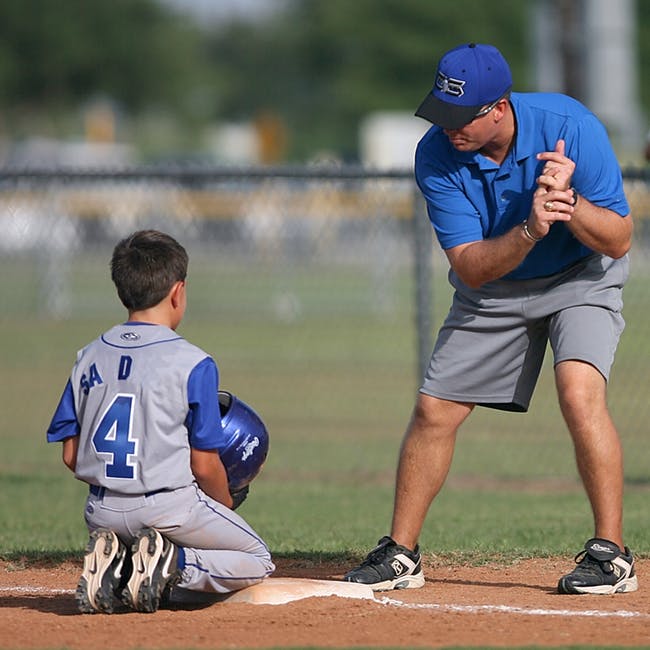About a week ago I put out what I thought was a pretty straightforward tweet. The fact that it wasn’t received that way told me that this is something worth talking about in this blog. The tweet was: “As a coach do you create and drive the environment or do you react to it?”
I got some interesting responses to this tweet. Let me start this blog with the hard part. As a coach, I think it is critical that you create and drive the environment rather than simply reacting to it.
So let’s begin with the coach’s job:
- Teach expectations
- Hold athletes accountable
- Model, teach, reinforce character traits
- Teach the sport
- Create predictable routines
- Game plan
Teach expectations:
Your athletes don’t come to you knowing what you expect or why, this is something you have to teach them. If you have not done this, then you have no right to get upset that they aren’t meeting your expectations. You cannot blame their parents, President Trump, Hillary Clinton, globalism, or iPhones if you have not bothered to try to teach them yourself.
Sometimes this is a simple redirection. For example, I insist on being answered “Yes sir” or “Yes coach” instead of “Yeah.” But if I don’t tell the athletes that, they don’t know.
Here’s another example. I spend the first few baseball practices every season teaching the athletes where and how to put their gear. This seems really controlling but it has a purpose, it makes sure that everyone knows exactly where there stuff is so we don’t spend minutes looking for our gear and holding up the game. I could get upset that they can’t find their stuff, or I can set it up so that they can be successful.
Hold athletes accountable:
Once you’ve taught the athletes what you expect, then you hold them accountable for it. A few thoughts here. First, everyone needs to be treated the same. This means your stars, this means your starters, and this also means the kids that have no chance of making the team – everyone needs to be coached and treated the same. Second, if it is an expectation then there need to be consequences for not meeting them. It could be as small as a redirection (like in “Yes sir”) or as major as sitting out games.
This is really important because there aren’t many places outside of sports and the military where young men and women are held accountable for expectations anymore. If we don’t do this then we do them a disservice because they grow up to be narcissistic adults and we bear some of the blame.
This can also apply to sport skills. But, that is provided that you bothered to teach the sport skills first. It’s difficult to get upset with your athletes’ performance if you didn’t coach them in how to perform the skills first. In other words, you have to teach the skills, give them a chance to practice/master it (with feedback), before you get upset with their performance. Remember coach, stress makes you do dumb things too.
Model, teach, reinforce character traits:
Sports end for everybody at some point. What kind of person did they help to make you? Most people won’t play sports very long but they have a potential to teach a lot of life lessons, but quite a bit of that depends on the coach. The first job for the coach is to model this himself or herself.
For example, we all preach the value of team (provided we’re coaching in team sports). But, if we’re the coach that is constantly looking for the next bigger job and jumping ship every few years, we’re not interested in team – we’re interested in our own star. That makes it difficult to sell the team first concept to young adults who are great at spotting this kind of hypocrite.
Again, you have to teach what you want developed. Don’t assume your athletes know how to function as a team, how to support each other, the value of service, or even how to treat people with courtesy and respect. Teach it, model it, and then hold up and celebrate those athletes that do it well as a great example to others.
Teach the sport:
This is way down on my list and this is hard for young coaches. As a young coach I went to this step first and skipped the others that came before this. At the end of the game, we’re going to play games. You still have to teach the athletes the skills, I don’t know of any level where you can assume the fundamentals will be there – so they have to be taught, corrected, and reinforced. If you have done the above steps right, hopefully you have athletes in your program that are going to be receptive to teaching. If they are not, then you are going to have to consider how you are going to reach them.
Create predictable routines:
Predictable routines are important for putting athletes at ease in tense situations so that they can be successful. You have to establish these in practice, waiting until the championship game to put it into place will be a disaster. These routines help athletes to be successful and know what’s going on no matter the location, how big the stage is, or how loud/hostile the crowd is.
For example, my basketball teams use the same drills to warm up in practice and in games. We’re going to shoot for a few minutes, then we’re going to do pass/lay-up drills, then we’re going to shoot around the key. In baseball, my pitchers and catchers do the same warm-up, the hitters go through the same progressions, the infielders warm up the same way, etc. We do the same exercises before practice and games as a team. It all creates consistency and familiarity and reduces how many things the athlete has to think about before a game or practice.
Teams that don’t have these structures in place will get confused, frustrated, and psyched out. As a coach, if I see the other team doesn’t know what to do during the warm up, is trying to learn new skills and drills, or has a flustered coach then I know I’m starting the game with an advantage.
Game plan:
Notice this is the last item in my list? I like showing how smart I am just as much as the next person, but if the above things aren’t done then this won’t be helpful. Everything step that came before this are things that outsiders don’t see. But if they aren’t in place then it is obvious to everyone.
If your male athletes have no respect for females and you have an endemic assault problem, that’s on you the coach for not teaching expectations, holding them accountable, and modeling/teaching/reinforcing character traits. If your baseball team collapses because they only have a stretch of grass to warm up on before the game, that’s on you for not teaching them routines. If your team cannot do the pregame warm-up because their rollers, bands, and sticks aren’t available then that’s on you for not teaching them fundamental skills and drills.
This is all a long way around saying that the coach needs to set and drive the environment!




